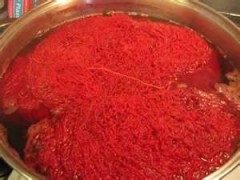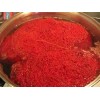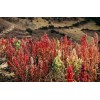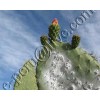Cochineal (Dactylopius coccus)
cochineal originally came from Mexico and was not known in Egypt at the time قرمزدانه . Peru remains the worlds largest producer and exporter of (cochineal insect) At present,the insect is commercially produced on cactus pear plantations in Peru, the Canary Islands, Chile, Bolivia, South Africa and Mexico. Peru is the main producer of cochineal, with 85% of the total, followed by the Canary Islands, Bolivia and Chile. A high percentage of Peruvian cochineal (natural organic colorant ) comes from insect gathering by small farmer families.
The red dye, carmin red cochineal is obtained from the eggs of the female insect, The total life cycle of females is between 60 to 120 days while the males cycle is 45 to 90 days
Cochineal is the name used to describe both the colour and its raw material source, the dried pregnant females of Dactylopius species of insects, especially D. coccus Costa. The process begins with drying cochineal female insects, which reduces the weight by 70 % Between 80 000 and 150 000 insects are required to produce 1 kg of dried cochineal. (The principal pigment) in cochineal is carminic acid, being very soluble in water. Good quality raw cochineal can reach 18 to 22 % of insect dry weight Current major usages of cochineal and its derivates are in the food, drug and cosmetics, textilies, industries, and as biological stains. Carminic acid.
Carminic acid, extracted from cochineal, has many uses as a colouring agent. For example, food (milk products, fillings, icings, confectionery, meat products, cereals, soft drinks, liquors, ice-creams, salads, jellies, juices and chewing gums), cosmetics (eye shadows, lipsticks and masks), the pharmaceutical industry (solutions).
The red colour is cochineal dye, the yellow colour is safflower dye, the blue colour is indigo dye and the green colour is a mixture of indigo and tumeric dyes Water quality in cochineal dyeing is very










